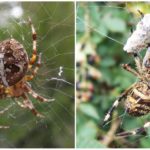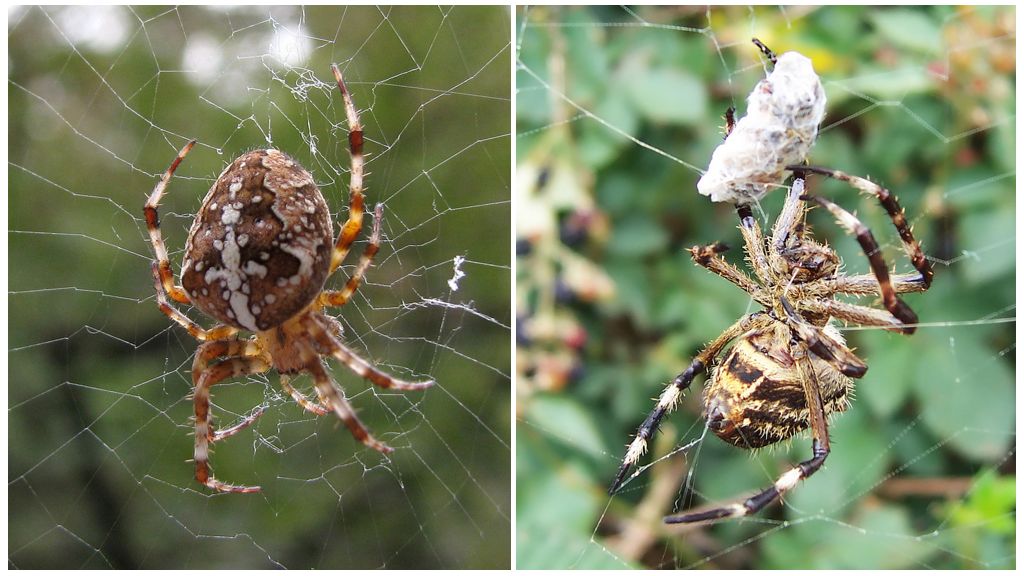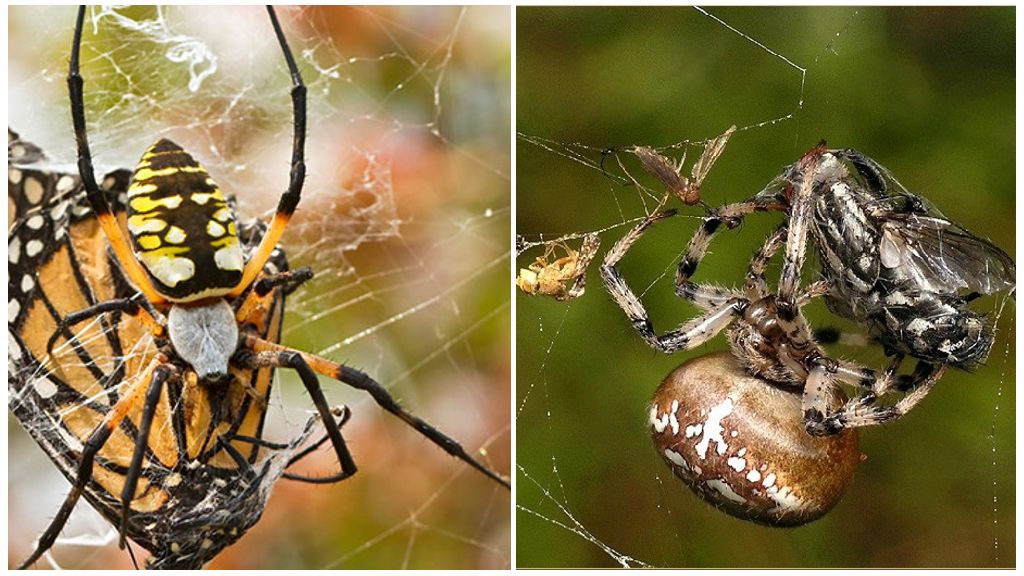Weaver Spiders
- Weaver Spiders
- Weaver Spiders
Orb weaver spiders (lat. Araneidae) comprise 3 thousand species, united in 170 genera. Differ in size, color. The largest representatives live in tropical countries, weaving a web in a radius of up to 2 m. Locals use a “canvas”, folded in several layers, to catch fish. In our area, the orb-web can be found everywhere. They love forests, gardens, sunny meadow.
Photos and appearance description
Color, sizes vary from 5 mm to 28 cm. Small, medium-sized specimens inhabit the territory of Russia.The structure of the body is typical - a convex abdomen, cephalothorax. Limbs long, powerful, connected to the cephalothorax. Only 4 pairs. Color gray, brown, black with various stains, patterns, stripes or without them. Photos of orb-web spiders can be seen below.
On a note!
From the front of the cephalothorax, there are pedipalps that look like another pair of limbs. Moving tentacles help hold the victim, fray, chop food. Chelicera ends with sharp canines, contain poisonous glands. They predator pierces the chitinous cover of the victim, the skin.
On the head there are 8 eyes. The most important - 1 pair, placed in the center. They catch visual images, silhouettes, shadows at a distance of 25 cm. Side - auxiliary eyes, provide an outlook on all sides, warn about the approach of enemies, potential prey. Circular spiders respond well to movement, vibrations of the web, capture odors. The organs of smell, touch are paws.
Lifestyle
Spiders are nocturnal, daytime hiding in a secluded place near their own cobwebs. To catch prey weave trap nets. Engaged in this night, the formation of the canvas takes about 2 hours.
Outwardly, the web resembles a lace fabric. Initially, the predator stretches strong threads, forms a triangle. Many cells of different diameters are moving away from them. The ability to weave trap nets is transmitted genetically. A small spider after birth is able to repeat everything that makes his mother, but in smaller sizes.
Interesting!
The orb is spending most of its life, sitting on the web at the very center, or hanging down in anticipation of a hearty lunch. It is possible to notice the day of the predator on the spider web, shining in the sunlight in the pose of the letter “X”. Weaving nets almost everywhere - on plants, grass, trees, snags, abandoned buildings, outbuildings.
Nutrition
The main diet consists of insects, as well as small relatives:
- flies;
- mosquitoes;
- midge;
- caterpillars;
- snails;
- worms;
- butterflies;
- wasps;
- bees;
- beetles;
- small spiders.
An orbiter learns about the presence of a victim from the vibrations of the web. Approaching prey, bites, injects poison, saliva. Wraps cobwebs, crawls to the side, watches what is happening for a few minutes. Toxic substance causes paralysis of the muscles, saliva turns the insides into a liquid mass.The spider tries to eat everything at once, leaving only the chitinous shell.
Interesting!
Without food, the spider can stay for about a year. Under normal conditions, large quantities of food eats 1 time in 7-10 days. Trapping the net is constantly updating, crawling to another place. Throws a damaged web after 12 victims.
Breeding
In a pair, weavers gather only during the mating season. The male gently approaches the web of the female, paws, creating certain vibrations. If the lady is predisposed to an acquaintance, she crawls out into the middle of the canvas, sitting motionless. A hungry spider eats a gentleman before he starts caring. The same fate awaits him if the chosen one suddenly gets hungry after fertilization.
The female forms a cocoon, lays there several hundred eggs. Attaches near its own shelter. Carefully guarded. After 2-3 weeks, a younger generation appears. Almost immediately crawl in different directions. Hibernate under foliage, in crevices, hollows, abandoned nests.
Poisonous or not
Circular squads do not differ in their aggressive temper, prefer to hide imperceptibly than rush to attack. Can bite, defending their own lives.At the site of the bite, a slight redness, swelling, pain. It takes a few days. Circular spiders do not pose a serious danger to humans.









